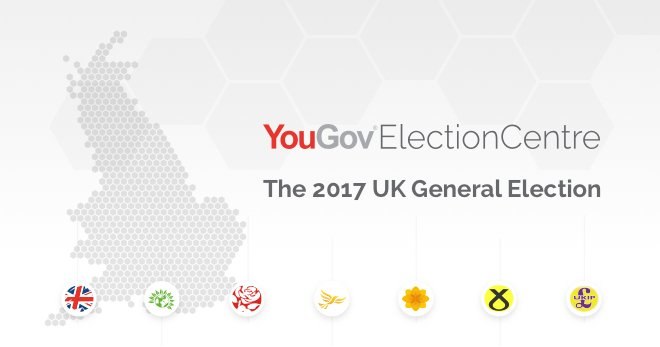Stephan Shakespeare introduces YouGov's 2017 election model
Our data shows that the huge Conservative lead just after the election was called has narrowed notably. But how do the current vote shares translate into seats and what sort of majority – if any – would this give Theresa May, should people’s votes remain the same over the final week of the campaign?
To see, we have produced a new election model based on Multilevel Regression and Post-stratification analysis, which will update every day between now and June the 8th. This is something we publicly tested during last year’s EU campaign and it always had “Leave” ahead.
It works by modelling every constituency and key voter types in Britain based on analysis of key demographics as well as voting behaviour in the 2015 general election and the 2016 EU referendum. Turnout is assessed on voters’ demographics and is based on analysis from 2010 and 2015 British Election Study data.
Every day, we are conducting approximately 7,000 interviews with registered voters from our panel about how they plan to vote in their constituency. This data is used to assess how each type of voter is shaping the race in every type of constituency in Britain. From this, the model calculates daily voting intention and seat estimates.
The model is based on the fact that people with similar characteristics tend to vote similarly – but not identically – regardless of where they live. Given it is a national model, though, it does not account for specific local factors that may shape the vote in some seats.
Currently our model is showing the Conservatives set to take 311 seats and Labour 255, the SNP on 51 and the Liberal Democrats on 10, putting us on hung parliament territory. However these are just the midpoints and, as with any model, there is leeway either side. For example, the Tories could end up with as many as 344 and Labour as few as 227 – leading to an increased Conservative majority.
At the moment, the data suggests that there is churn on all fronts, with the Conservatives, Labour and the Liberal Democrats both likely to both lose and gain seats. Based on the model’s current estimates, some seats are likely to change hands along EU referendum dividing lines.
This is just a snapshot based on data form the past seven days and people can and do change their minds in the closing days of a general election campaign. Furthermore, it would only take a slight fall in Labour’s share and a slight increase in the Conservatives’ to see Theresa May returning to Number 10 with a healthy majority.
We know we run a risk publishing so much data in the heat of an election but as data scientists we are committed to innovating to increase both accuracy and specificity. We will all watch the daily estimates with interest.









